Best OVERALL AMP
FOR VOCALS
-
Overall: 9/10
-
Best Feature: Two-way speaker system with bi-amped
-
TedScore™: 9/10
Best ACTIVE
AMP
FOR VOCALS
-
Overall: 9/10
-
Best Feature: Ergonomic handles
-
TedScore™: 9/10
Best STREET AMP
FOR VOCALS
-
Overall:
-
Best Feature: Lightweight and very portable
-
TedScore™: X/10
Finding the proper amp for vocals can feel like searching for a note in a musical haystack. But when you do, it’s like hitting that perfect pitch—it transforms your performance from good to downright sensational.
I remember gigging on cobbled streets, my voice straining to be heard until I stumbled upon the Boss Acoustic Singer Live LT. Its rich sound and portability amplified my melodies and spirit, becoming my trusty sidekick for every show.
Now, I know you also want to step into the spotlight confidently.
Keep reading to learn how an amp can elevate your performance, and remember, the right amp might be your ticket to the big time.
Get those vocals ready, and we’ll explore the world of vocal amplifiers, helping you find the ideal match for your singing endeavors.
Selecting the Right Vocal Amp
Budget Considerations
When searching for a vocal amp, it’s essential to consider your budget. There are models available for various price ranges, from affordable options to more high-end amps. It’s essential to strike a balance between quality and value for money.
Remember to factor in additional costs such as cables, stands, or a protective case. You can often find bundles or package deals to help save a few pounds.
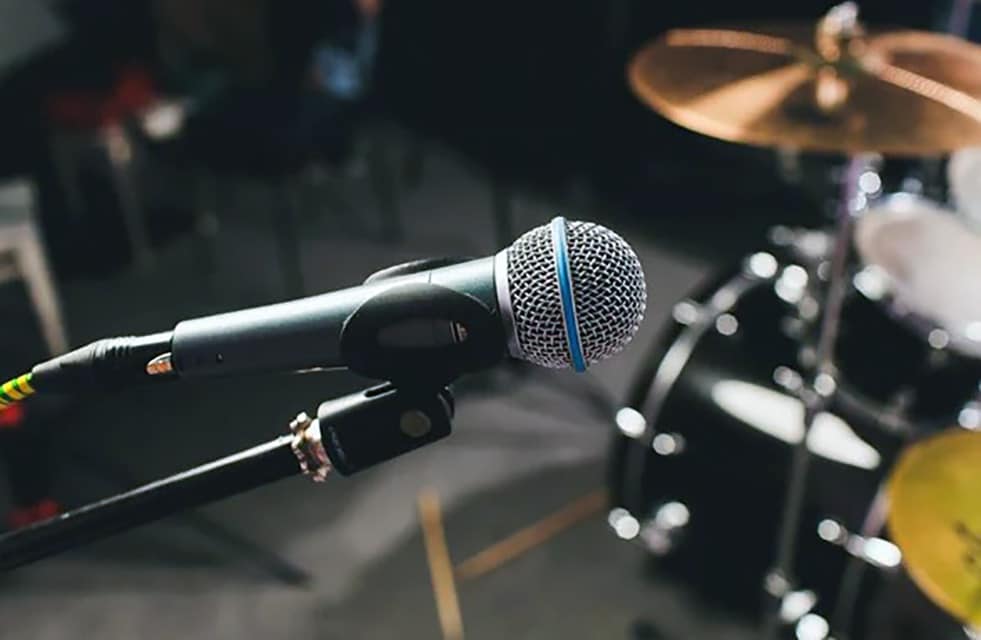
The Box MA120 MKII‘s wedge-shaped design is ideal for vocalists seeking reliable stage monitoring. With all the essential inputs and outputs, it offers a cost-effective solution.
Box MA120 MKII
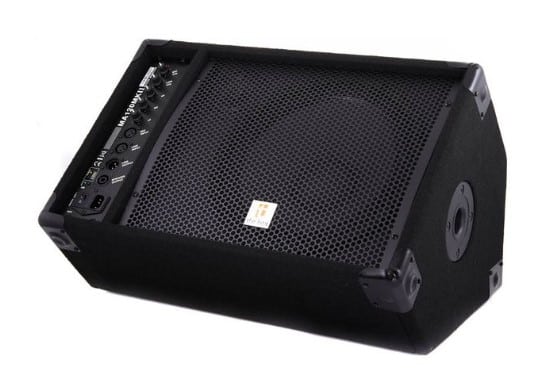
stage monitoring
FEATURES: - vocalists seeking reliable
stage monitoring
-Made with durable materials for long-term reliability
and performance.
- Additional speaker stand flange mount and rubber feet on the side.
- The interface and controls may be complex and less intuitive for operation.
When you click ‘Check Price’, you’ll see there are loads of great places to buy this item. Our personal favorite is Sweetwater for the US, and Thomann and Gear4Music for the UK & Europe.
They are the largest music retailers, with excellent customer service, competitive prices, really fast shipping, and the longest guarantees.
The professional musician who wrote this article combined many things,
from the product build, manufacturer’s reputation through to feedback
from other users, to create our famous TedScore™.
The Fender Acoustasonic 40 Acoustic Guitar Amplifier is a dependable choice in my capacity, particularly when enhancing my acoustic performances.
Its versatility of integrated effects, compact size, and ability to project clear sound renders it a valuable instrument for both practice sessions and small performances.
Fender Acoustasonic 40 Acoustic Guitar Amplifier
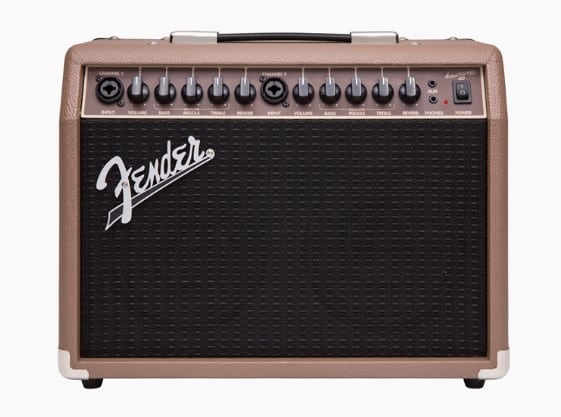
FEATURES:-Built-in reverb for added ambiance to your sound.
-Dual front-panel inputs for both instrument and microphone connectivity.
-Unique "whizzer" cone design for enhanced high-frequency response.
- Can also be used as an onstage monitor when combined with a PA system.
- Relatively heavier weight compared to some other similar amplifiers.
When you click ‘Check Price’, you’ll see there are loads of great places to buy this item. Our personal favorite is Sweetwater for the US, and Thomann and Gear4Music for the UK & Europe.
They are the largest music retailers, with excellent customer service, competitive prices, really fast shipping, and the longest guarantees.
The professional musician who wrote this article combined many things,
from the product build, manufacturer’s reputation through to feedback
from other users, to create our famous TedScore™.
The Fender Acoustasonic 40 Acoustic Guitar Amplifier is a dependable choice in my capacity, particularly when enhancing my acoustic performances.
Its versatility of integrated effects, compact size, and ability to project clear sound renders it a valuable instrument for both practice sessions and small performances.
Assessing Power and Volume Needs
One should look for an amp to project one’s voice across the desired space, whether a cozy café or a spacious hall.
The Boss Acoustic Singer Live LT has become essential to my performances, thanks to its versatile effects and harmonies that elevate my acoustic sound.
Its compact design and intuitive controls make it easy to use, and the natural sound reproduction enhances the overall quality of my live performances, making it a valuable addition to my setup.
Boss Acoustic Singer Live LT
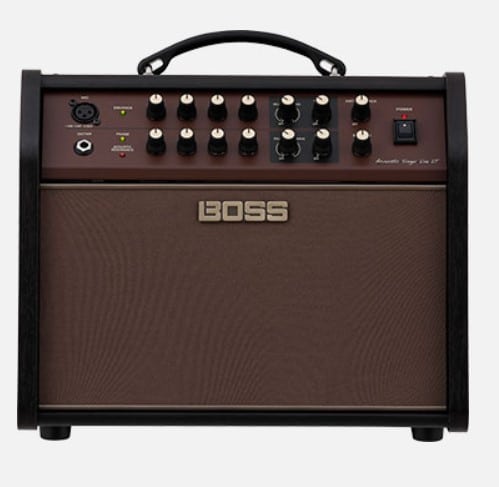
FEATURES: -Inclined housing design for optimized sound radiation
-Two-way speaker system with bi-amped
- Compact and portable.
- Versatile effects and harmonies
- The controls on this amplifier may be overwhelming for some users.
When you click ‘Check Price’, you’ll see there are loads of great places to buy this item. Our personal favorite is Sweetwater for the US, and Thomann and Gear4Music for the UK & Europe.
They are the largest music retailers, with excellent customer service, competitive prices, really fast shipping, and the longest guarantees.
The professional musician who wrote this article combined many things,
from the product build, manufacturer’s reputation through to feedback
from other users, to create our famous TedScore™.
The JBL EON615 is a highly constructed speaker with substantial power—it boasts a massive 1000 watts battery power. This amp will take up any room you put it in.
JBL EON715

FEATURES:-Full True Wireless Stereo (TWS) operation
-Built-in DSP with color LCD display and 3-channel digital mixer
- Safe and comfortable transport is ensured by the ergonomic handles.
- May be heavier than other similar speakers.
When you click ‘Check Price’, you’ll see there are loads of great places to buy this item. Our personal favorite is Sweetwater for the US, and Thomann and Gear4Music for the UK & Europe.
They are the largest music retailers, with excellent customer service, competitive prices, really fast shipping, and the longest guarantees.
The professional musician who wrote this article combined many things,
from the product build, manufacturer’s reputation through to feedback
from other users, to create our famous TedScore™.
Exploring Portability Options
If you’re a gigging singer, portability is essential. Lightweight and easy-to-carry amps are a must-have.
Fishman Loudbox Mini Charge
The Fishman Loudbox Mini, another high-quality amp from Fishman, features a convenient XLR input for a microphone. The initial standout feature is the Loudbox Mini’s volume, which lives up to its name by providing ample clean headroom and power suitable for smaller venues.
Fishman Loudbox Mini Charge
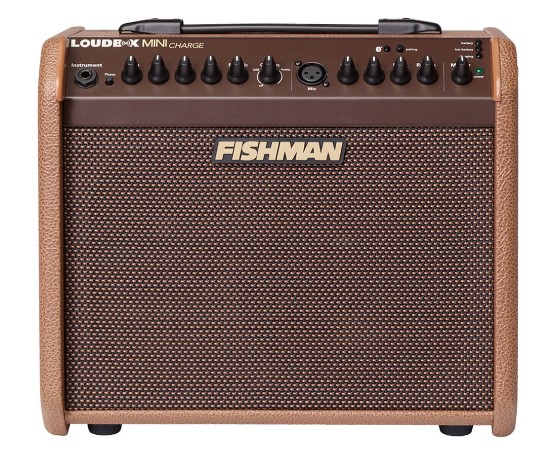
FEATURES: -Built-in reverb and chorus.
-3-band EQ with low, mid, and high tone controls.
- Light 21-pound amp for easy portability
- Ideal for singing to backing tracks
- Rechargeable battery
- Not suitable for large venues
When you click ‘Check Price’, you’ll see there are loads of great places to buy this item. Our personal favorite is Sweetwater for the US, and Thomann and Gear4Music for the UK & Europe.
They are the largest music retailers, with excellent customer service, competitive prices, really fast shipping, and the longest guarantees.
The professional musician who wrote this article combined many things,
from the product build, manufacturer’s reputation through to feedback
from other users, to create our famous TedScore™.
Roland CUBE Street EX
True to its name, the Roland CUBE Street EX is designed for street performances and is an ideal choice for buskers.
This compact amp sounds great and equipped with essential features for vocals and guitar, including full 3-band EQ and Reverb on both channels, with the mic/guitar channel also featuring Chorus/Delay.
Roland CUBE Street EX

FEATURES: -Built-in tuner and COSM amplifier modeling
-Reverb and 3-band EQ on each channel
-Can connect your tablet or smartphone via i-CUBE LINK
- Lightweight and very portable
- Great sounding amp for vocals and instruments
- Dedicated clean and distortion for electric guitars
- Takes eight AA batteries
- Limited to being a busking-only amp
When you click ‘Check Price’, you’ll see there are loads of great places to buy this item. Our personal favorite is Sweetwater for the US, and Thomann and Gear4Music for the UK & Europe.
They are the largest music retailers, with excellent customer service, competitive prices, really fast shipping, and the longest guarantees.
The professional musician who wrote this article combined many things,
from the product build, manufacturer’s reputation through to feedback
from other users, to create our famous TedScore™.
Understanding Amplifier Technology
Walking through the technical landscape is essential when choosing an amp for vocals. Let’s unravel the magic behind different types of amplifiers.
I often rave about the warmth of sound that tube amps bring. They use vacuum tubes to amplify the signal, a technique treasured by purists for its rich harmonics.
However, they require more maintenance than solid-state amps, known for their reliability and durability. Solid-state amps use semiconductor circuits and generally provide a cleaner sound, which makes them a practical choice for precise vocal amplification.
Now, if I shift my focus to digital modeling amps, they are a playground for versatility.
These beauties use digital processors to emulate the sounds of various amplifiers, often allowing me to tweak and store settings at the push of a button. They’re fantastic for vocalists who enjoy a palette of audio flavors without lugging around several rigs.
Hybrid amps merge the old with the new, like a bridge connecting two eras. They typically feature a tube-driven preamp section paired with a solid-state power section.
This gives me a lovely blend of the tube warmth and the consistency of solid-state, making hybrid amps a balanced choice for vocalists who seek the best of both worlds.
Microphones and Vocal Amps
When I pick the right microphone and vocal amp combination, it feels as if the stars align. The microphone captures my voice’s unique tone, and the amp projects it cleanly and powerfully.
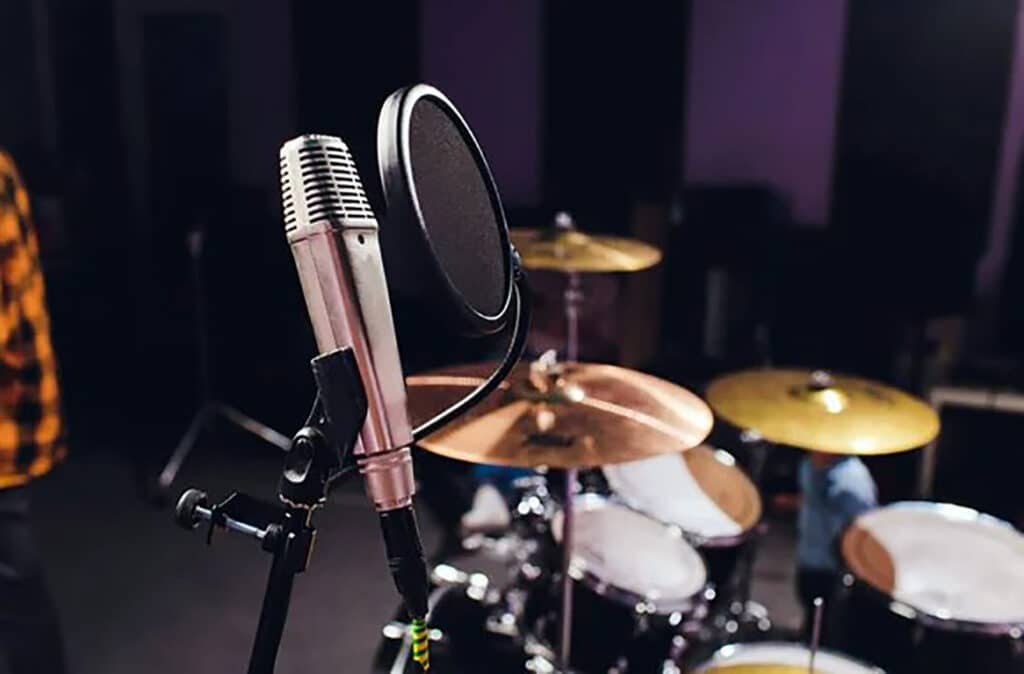
Dynamic mics, I’ve found, are robust workhorses. Great for gigs, they can handle high volume levels without distortion.
Condenser mics, on the other hand, are like the sensitive souls of the microphone world. They’re perfect in the studio, capturing delicate nuances with their detail-oriented nature.
Impedance matching resembles a technical handshake between the microphone and the amp. When they match, it’s a firm grip; my sound is clear and robust.
But if they mismatch, it’s like a limp fish – my sound quality suffers, and nobody wants that.
Mic techniques are the secret spices in my performance recipe. Holding the mic close adds a rich, intimate flavor to my sound.
Stepping back, and it’s like adding a dash of roominess. The right move can genuinely make the song soar.
Fundamentals of Vocal Amplification
When I’m gearing up for a performance, the clarity of my vocals is paramount. It’s all about finding the proper vocal amp to bring out the best in my voice.
Vocal amplifiers are not your average guitar amps; they’re explicitly engineered to handle the frequency range and dynamics of the human voice.
I always look for models that promise fidelity and consistency across various styles and microphones.
I’ve found that the best vocal amps blend sound quality and practical features. Here’s a quick rundown of what I consider when choosing one:
The amp must preserve the natural tone of my vocals without adding distortion.
Having options like reverb and equalization at my fingertips allows me to tailor my sound on the go.
I prefer amps built to withstand the rigors of gigging.
Lightweight and easy-to-carry designs save my back during tours.
I balance cost with functionality to find the best value.
An amp’s ability to convey nuances in my voice without faltering is crucial when I’m on stage. It ensures that every subtle inflection is heard.
Plus, I need to trust that the amp can cope with varying volumes and the dynamic nature of live performances. What works in the studio may not shine on stage; the amp must excel in both settings.
By paying attention to these fundamentals, I set the stage for a performance where my vocals are front and center and truly captivating.
After all, an impeccable vocal performance hinges on an amplifier that’s up to the task.
Connectivity Options
When I hunt for the best amp to elevate my vocal performances, I check an amp’s connectivity options.
It’s a crucial aspect that allows me to plug in and play easily while also expanding my control over the performance.
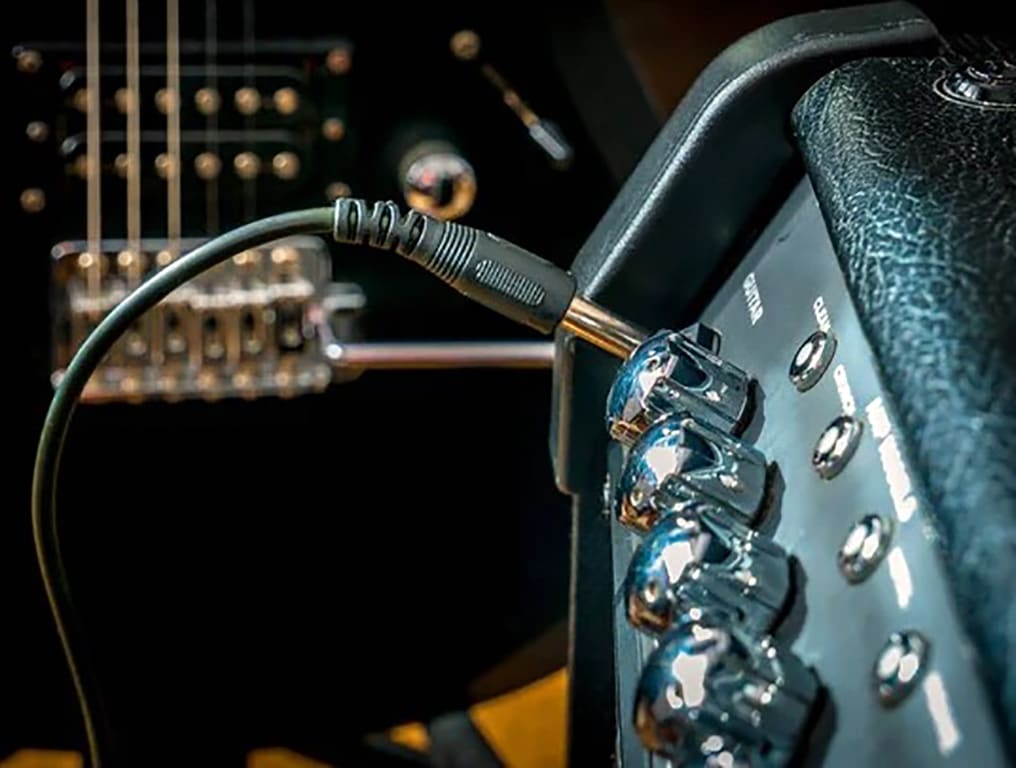
Inputs and Outputs
My standard checklist includes a variety of inputs and outputs.
Typically, I look for:
Essential for connecting microphones directly.
For instruments and line-level devices.
A combo amp having both options is a gem for versatility. Some amps come with multiple channels, which allows simultaneous connections—ideal for multi-instrumentalists or group gigs.
Bluetooth and Wireless Capabilities
Who doesn’t adore the convenience of Bluetooth and wireless connectivity? Without cables, I can stream backing tracks directly from my device to the amp.
Here’s what makes an amp stand out:
Bluetooth: For cable-free music streaming.
Wireless Mics: Some amps support wireless microphones, reducing on-stage clutter.
This feature is brilliant during rehearsals or casual

Expansion and External Control
A combo amp having both options is a gem for versatility. Some amps come with multiple channels, which allows simultaneous connections—ideal for multi-instrumentalists or group gigs.
For hands-free volume control over effects.
When I need to fill a larger space with sound.
These connections allow me to adapt to different venues and control the amp settings dynamically as I perform.
Acoustic Considerations
I’m mindful that room acoustics, feedback management, and portability are pivotal in choosing the proper amp for vocals.
These factors influence not just the clarity of the sound but also the ease with which I perform.
Room Acoustics
The character of the room where I perform impacts sound enormously. I consider both the size of the room and its materials; hard surfaces can lead to unwanted repercussions.
An amplifier that offers a clear and concentrated sound projection works wonders in smaller venues. I aim to achieve a sound that envelops the space without overwhelming it.
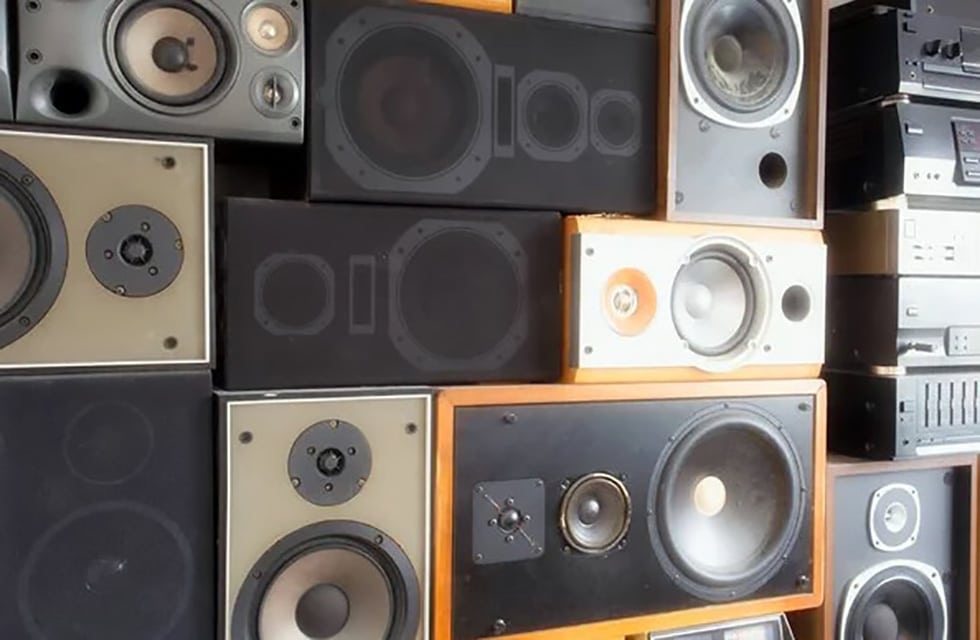
Feedback Management
An amp’s mobility can make or break my performance in diverse environments. I prefer amplifiers that strike a balance between power and portability, as it makes them versatile for various settings.
The placement of my amp is deliberate to ensure optimal sound projection and audience engagement. It’s not just about lifting the sound; it’s about directing it where it’s most effective.
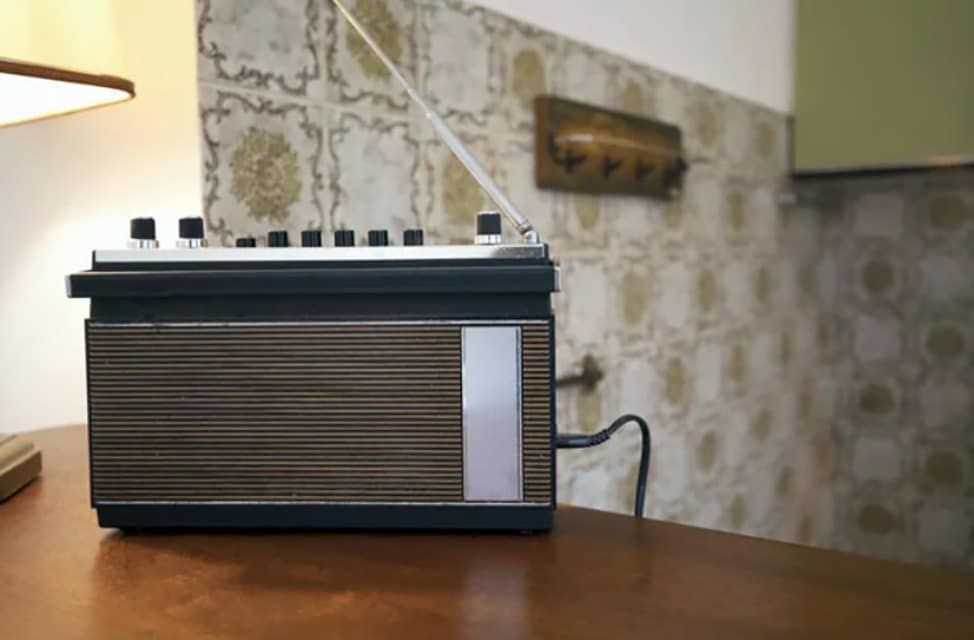
Vocal Amps in Live Settings
When I perform live, the right vocal amplifier can make all the difference.
Whether I’m gigging at a small venue or busking in the busy streets, it needs to interface seamlessly with PA systems and balance with in-ear monitors.
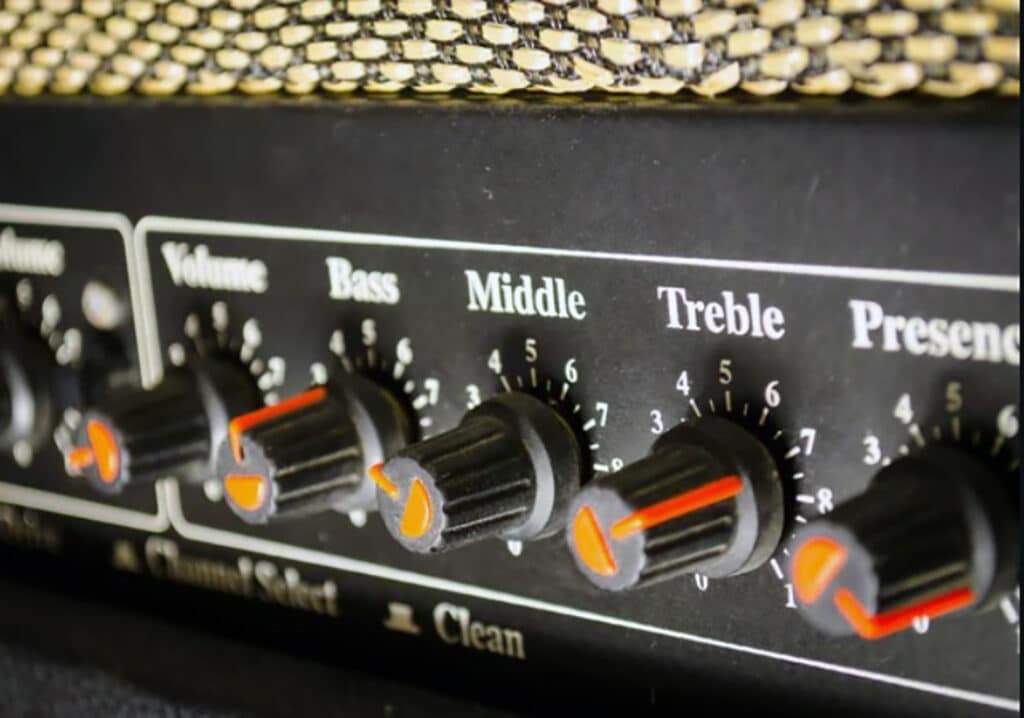
PA Systems Integration
Not all vocal amps plug and play nicely with PA systems. The ones that do, though, often have multiple connection options like XLR and 1/4″ jacks.
It’s paramount for me to have a vocal amp that matches the venue’s power requirements and offers clear sound without interference.
Monitors and In-Ear Systems
When on stage, I rely heavily on monitors to hear myself.
Some vocalists prefer in-ear systems for a more intimate sound experience.
No matter what, the vocal amp I choose has to complement these systems. It must provide a crisp, uncolored sound, avoiding any feedback issues that might distract me or the audience.

Live Sound Challenges
Dealing with the acoustics of a new space is a challenge I regularly face. A vocal amp with adjustable EQ settings helps me counteract any muddy or tinny sound characteristics of the room.
Moreover, portability becomes a primary concern when moving from one gig to another, so a lightweight but durable amp is my go-to choice.
Recording with Vocal Amps
When recording vocals, the rig I choose can significantly impact the quality and character of the sound captured.
Each environment requires a specific approach with vocal amplifiers, from setting up in a home studio to using professional gear.
Home Studio Setup
In my home studio, selecting the right vocal amp is crucial. It must offer precise, accurate amplification suitable for the acoustics of a smaller space.
Considering options like the Fender Acoustasonic 40 gives me solid vocal clarity combined with the convenience of portability, making it an ideal choice for home recordings.
Additionally, I position the amplifier and microphone correctly to avoid feedback and capture the best sound.
Fender Acoustasonic 40 Acoustic Guitar Amp
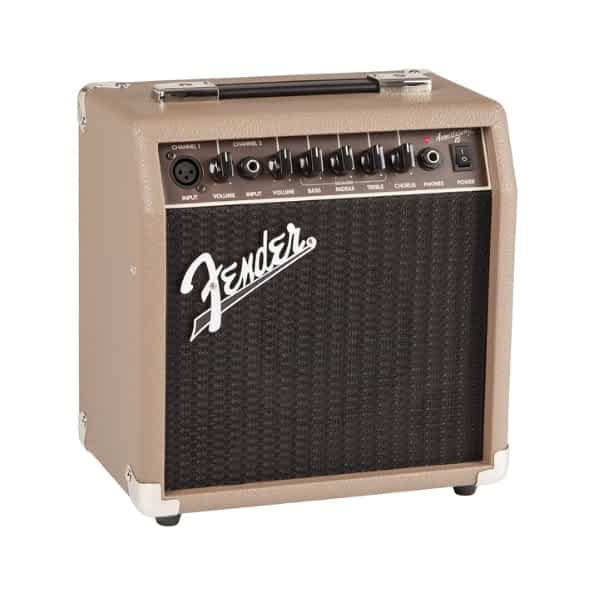
FEATURES: -Built-in reverb for added ambiance to your sound.
-Dual front-panel inputs for both instrument and microphone connectivity.
-Unique "whizzer" cone design for enhanced high-frequency response.
- Can also be used as an onstage monitor when combined with a PA system
- Relatively heavier weight compared to some other similar amplifiers.
When you click ‘Check Price’, you’ll see there are loads of great places to buy this item. Our personal favorite is Sweetwater for the US, and Thomann and Gear4Music for the UK & Europe.
They are the largest music retailers, with excellent customer service, competitive prices, really fast shipping, and the longest guarantees.
The professional musician who wrote this article combined many things,
from the product build, manufacturer’s reputation through to feedback
from other users, to create our famous TedScore™.
Professional Studio Considerations
Working in a professional studio, I assess the room’s acoustics and the available equipment.
High-end amplifiers like the Electro-Voice ZLX-12BT provide me with robust sound and durability—ideal for the demanding studio environment.
I often collaborate with sound engineers to fine-tune the settings on specialized gear, such as API preamps, which are acclaimed for their crisp, assertive vocal tone.
Electro-Voice ZLX-12BT
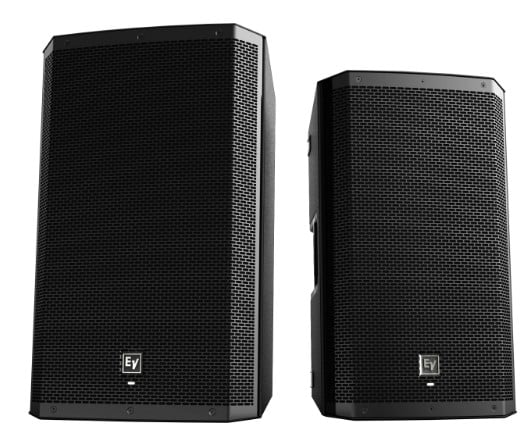
FEATURES: -Large and small clip indicators on back LCD warn of overs from distance.
Front LED customization: On, Off, or Limit (flashes when limiter engages).
-Bluetooth built-in for easy access to music from your devices.
- Lightweight and easy to carry with ergonomic handles.
- Relatively heavier weight compared to some other similar speakers.
When you click ‘Check Price’, you’ll see there are loads of great places to buy this item. Our personal favorite is Sweetwater for the US, and Thomann and Gear4Music for the UK & Europe.
They are the largest music retailers, with excellent customer service, competitive prices, really fast shipping, and the longest guarantees.
The professional musician who wrote this article combined many things,
from the product build, manufacturer’s reputation through to feedback
from other users, to create our famous TedScore™.
Direct Recording vs Microphone Capture
Deciding between direct recording and microphone capture often depends on the sound I’m after.
Direct recording allows me to send the audio straight from the amplifier to the recording interface for a purer signal.
Whereas, if I’m looking for the ambiance and natural resonance of the room, capturing the sound through a microphone placed in front of the vocal amp, like The Box MA120 MKII, will imbue the recording with that extra layer of live authenticity.
The Box MA120 MKII

FEATURES: -Has a modern design that complements various aesthetics.
-Made with durable materials for long-term reliability and performance.
- Additional speaker stand flange mount and rubber feet on the side.
- The interface and controls may be complex for operation.
When you click ‘Check Price’, you’ll see there are loads of great places to buy this item. Our personal favorite is Sweetwater for the US, and Thomann and Gear4Music for the UK & Europe.
They are the largest music retailers, with excellent customer service, competitive prices, really fast shipping, and the longest guarantees.
The professional musician who wrote this article combined many things,
from the product build, manufacturer’s reputation through to feedback
from other users, to create our famous TedScore™.
Microphone Integration
When I’m choosing an amp for vocals, I consider its microphone integration. One key aspect is mic channels.
Amps with multiple mic channels allow me to connect several microphones at once. Some combo amps even offer dual channels for guitar and vocals.
Phantom power (+48V) is essential for certain types of microphones, like condenser mics.
Most vocal amps come with XLR inputs and offer built-in phantom power. This feature enables me to use high-quality microphones while performing live or recording.
Microphone Integration
I love playing the guitar and recognizing the importance of an excellent, dedicated guitar channel. It works wonders in balancing the bass, treble, and overall sound.
For acoustic guitars, having a separate channel is crucial. It helps to maintain the richness and warmth of the instrument’s sound.
Let’s talk electric guitars. They can benefit from specific amps, enhancing their power and tone.
Finding the right amp is essential for an excellent electric guitar performance.
However, remember other instruments, such as keyboards and percussion. It’s important that they, too, have suitable amps that cater to their unique sound qualities and complexities.
By doing so, we’re providing everyone with a genuinely harmonious musical experience.

Effects and Processing
I love using reverb on vocals – it adds space and depth to my performance. Echo effects, such as delay, can also enhance my vocal sound by creating a sense of space.
Some vocal amps include built-in reverb and echo effects, while others may need an external processor.
My favorite reverb types include hall, room, and plate reverbs, each offering a unique atmosphere. Delay/echo effect options range from short slap-back echoes to longer ambient echoes.
A chorus effect can add richness and depth to my vocals, making them seem fuller and more present.
Delay and chorus effects are ideal for achieving that lush, layered sound. Harmonizers can also help create harmonies, especially in live performances.
On the other hand, Looper’s effects allow me to record and layer my voice in real time, which is perfect for creating vocal harmonies or building up loops during performances.

Here’s a list of features I find helpful in vocal amps:
Reverb, echo, chorus, and looping
Ability to use additional processors for specific effects
Fine-tuning options for each effect
EQ and Effects for Vocals
I’ll take you through the essentials of EQ and effects for vocals to ensure your singing cuts through the mix with clarity and character.
Let’s discover how you can make the most of your vocal amp’s features!

I always pay attention to the equalizer (EQ) when I adjust my vocal tone. It’s the difference between a tinny squawk and a rich, full-bodied sound.
Typically, I reduce frequencies around the 2 kHz to 4 kHz range if the vocals sound sharp. This little tweak helps smooth out the vocals and allows them to sit perfectly in the mix.
The integrated effects on a vocal amp can be an absolute game-changer. A touch of reverb can add depth to my voice without needing external gear.
Some amps also have a built-in chorus effect, which I use to thicken my vocals for a lush, choir-like vibe. Remember that less is more—overdoing the effects can swamp the vocals.
When the built-in effects aren’t quite enough, I use an external effects loop.
This feature allows me to incorporate pedals and processors into the signal path. It affords me the flexibility to shape my vocals with granular precision.
The external loop means I can craft my unique vocal sound, whether it’s a subtle delay or a wild modulation effect.
With the right combination of EQ settings and effects, both integrated and external, I can achieve a vocal sound that’s both polished and expressive.
Additional Connectivity
I’ve noticed that many vocal amps offer Bluetooth connectivity. It’s fantastic for wireless connections to smartphones, tablets, or even laptops.
Auxiliary inputs are helpful, too. Connect your phone, MP3 player, or other audio devices seamlessly, giving you convenient access to backing tracks or enjoy music while you rehearse.
Oh, the headphone jack! A must-have for any musician.
Plug in your headphones, and you can practice privately without disturbing anyone. No more late-night complaints from the neighbors!
Conversely, line-outs let you connect to external PA systems or audio interfaces in an instant. It is ideal for larger venues or recording sessions where extra amplification is needed.
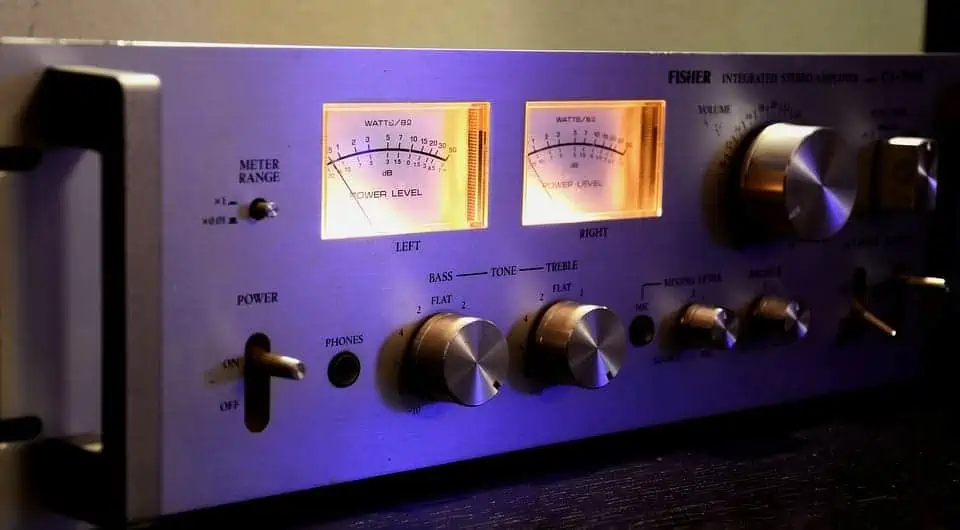
Maintenance and Troubleshooting
Keeping your vocal amp in top condition means less hassle and better performance.
Here’s a nifty guide to keep your amp in top-notch condition for years of belting out tunes:
I make it a habit to wipe my amp with a soft, dry cloth after each use. I also give it a good dust-off weekly with some compressed air, especially around knobs and jacks.
My amp dislikes water as much as a cat does, so I keep it away from damp conditions. It’s smart to use a cover if I’m in a moist environment to protect those precious circuits.
I treat my cables like gold; after all, they’re the lifelines of my sound. I gently coil them without kinks after a gig and store them neatly, which also makes setup for the next show a breeze.
Extremes of hot and cold are my amp’s archenemies! I store it in a place where the temperature is just right – not too warm, not too chilly.
A surge protector is my amp’s best mate protecting it from voltage spikes. Regularly checking the power cords for damage is also on my list for a happy amp life.
Once a year, I take my vocal amp for a check-up with a professional. They know how to treat any underlying issues that I might miss with my untrained eye.
Accessories
Proper care is essential to prolong the life of your vocal amp.
I recommend cleaning your amp regularly, paying attention to the connectors and control knobs. Gently remove any dust or debris that may have accumulated over time.
Consider investing in accessories like carry bags or cases to protect your amp further. They’ll help safeguard your investment during transportation and storage.
Additionally, here’s a brief list of useful accessories you might want to explore:
Keep your amp covered when not used, protecting it from dust and potential damage.
Raise your amp off the ground for better sound dispersion and increased protection.
Regulate your amp’s power supply, ensuring stable power and protection from power surges.
Common Problems and Solutions
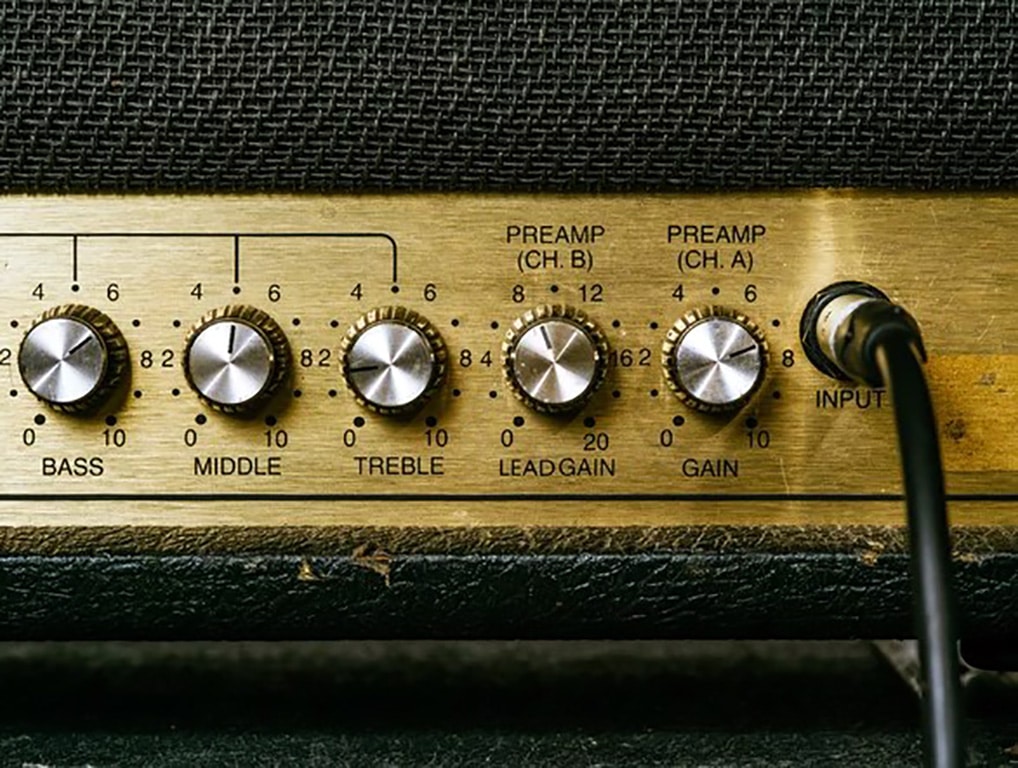
If I ever find the sound distorting, I’ll check the volume first. Turning it down can solve clipping and prevent harm to the speakers.
An annoying hum can often be fixed by double-checking cables and connections for loose ends. Ground loop isolators are also handy gadgets to tackle these types of interference.
No sound at all?
I always check to ensure the speaker wires are snugly connected and that I’ve selected the speaker output. A quick once-over can save me from unnecessary headaches.
Technical Support and Warranties
I always register my amp to activate the warranty. It’s a simple step that could save much trouble if something goes wrong.
Most manufacturers have dedicated support lines, which I’ve found to be a wealth of information.
Should issues leave me scratching my head, these experts are just a call away, providing guidance tailored to my amp model.
Remember, a well-maintained vocal amp is a reliable partner on stage.
I can focus on delivering stellar performances without technical distractions by keeping up with regular care and knowing how to handle common issues.
Expert Tips and Advice
Maximizing Your Amp's Potential
Getting the most out of your amp is all about the sweet spot of settings.
When working with combo amps, I’ve found that balancing the gain with the master volume preserves the clean signal while boosting presence.
Solid-state amps offer supreme reliability and a pleasingly consistent sound for my voice. Yet, if you’re vying for that sumptuous warmth, the tube amp is your ally.
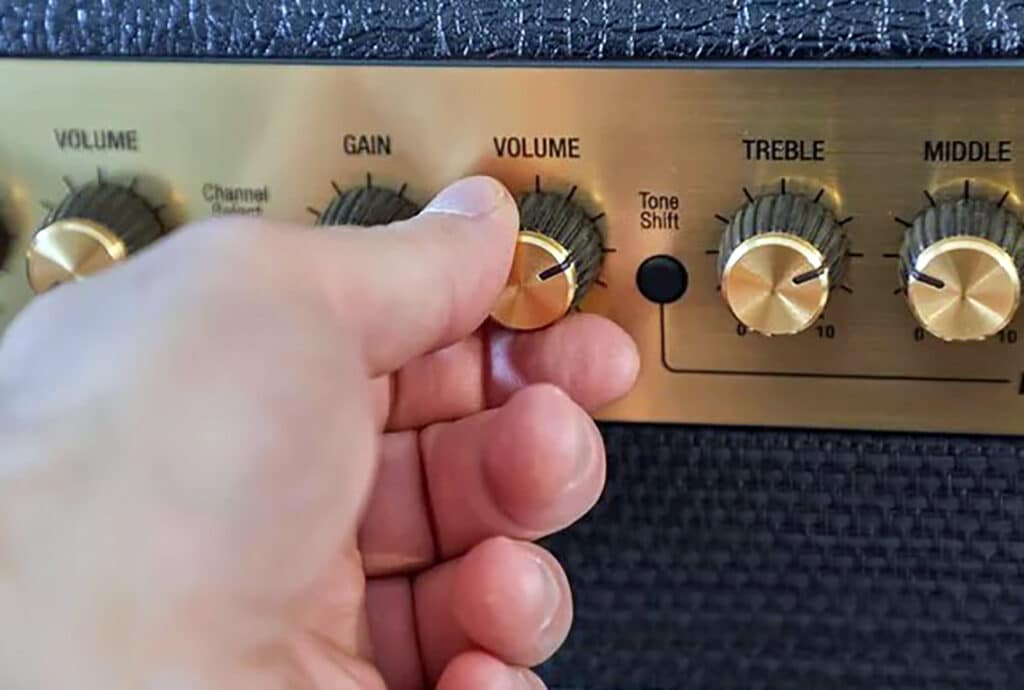
It’s kind of like giving the crowd a soft sonic hug.
With an acoustic amp, consider this: They’re designed to reproduce the intricate tones of an acoustic guitar.
They typically have a flatter frequency range, and when I use them for vocals, they beautifully capture the nuances of my performance.
Avoiding Common Mistakes
Now, let’s avoid the mistakes that can make a show less exciting. When I first got my amp, I should have paid more attention to how important it was to have a clear frequency range.
Ensure this amp complements your voice and doesn’t war with it — it’s not a competition.
Don’t give in to the urge to turn up the gain too much; that could lead to feedback instead of the praise you earn. To get the right balance, set your levels slowly and carefully.
Remember, your vocal amp should convey the emotion of your performance, not distract from it.
I ensure mine works for me, not against me. And so should you, fellow songbirds!
Amp for Vocals
Vocal Amplifiers Unveiled
When searching for the best vocal amps, singers should keep clarity and control in mind. It’s vital that an amplifier reproduces the voice with great precision and allows the user to adjust various settings.
I’ve had the pleasure of exploring various vocal amps for singers. As a singer myself, I found that there are great options out there for all budgets.
Here are my top choices:



Boss Acoustic Singer Live LT: This amp has gained popularity due to its impressive sound quality and versatile features. It’s perfect for those seeking a professional acoustic amplifier.
Roland CUBE Street EX: A street performer’s favorite, this amp offers portability and a well-rounded sound. Its combination of a twelve-inch woofer and a smaller tweeter makes it ideal for vocalists.
JBL EON615:
Renowned for its power, this amp offers 1000 watts and Bluetooth connectivity for music streaming.
Before you decide on an amp, I recommend considering your performance needs and preferences.
Sound Quality: A combination of woofer and tweeter for full-spectrum sound.
Power: An amp like the rugged 120-watt unit has the strength for diverse settings.
Versatility: Onboard effects and features like looping offer creative freedom.
Portability: For street performances or concert halls, ease of transport is a plus.
Price: It’s about balancing cost with the quality and perks I need for my vocal journey.
My focus remains on the harmony between me and the amplifier; it’s about the music we create together.
Wait! There’s more…
Discover top recommendations for the best microphones for singing in this detailed article.
FAQ's
A dedicated powered PA speaker or a vocal monitor is often the best option when choosing an amp for vocals. These amps are specifically designed to reproduce the human voice accurately and deliver clear, natural sound with sufficient power and clarity for live performances or rehearsals. Look for features such as balanced frequency response, ample headroom, and versatile connectivity options to ensure the best amplification for vocals.
Using a separate amp for vocals is often beneficial, especially in live performance settings where vocal clarity and projection are essential. Dedicated vocal amplifiers or powered PA speakers are designed to reproduce the human voice accurately and provide the necessary power and clarity for vocals in various environments. However, in some cases, a single amplifier or PA system can amplify vocals and instruments, especially in smaller venues or for solo performances.
Bands amplify vocals using various equipment, such as dedicated vocal microphones, guitar amps, preamps, and powered PA speakers or monitors. Vocal microphones capture the singer’s voice, which is then sent to a mixing console or audio interface, which is processed and balanced with other instruments. The mixed vocal signal is then amplified through powered speakers or monitors, providing clear and balanced sound for the audience. In larger venues, additional stage monitors may provide guitar amplifiers and vocal reinforcement for the performers.
While a bass amp is specifically designed to amplify and enhance the sound of a bass guitar, there may be better choices for vocals. Bass amps are optimized to reproduce the low frequencies of a bass guitar. They may not accurately reproduce the entire vocal range or provide the necessary clarity and projection for vocals. A dedicated vocal amplifier, powered PA speaker, or vocal monitor is generally recommended for amplifying vocals to ensure clear and natural sound reproduction.











All this talk about acoustic considerations and room acoustics, but how about we just sing louder? Problem solved, no fancy gear needed. 😉 Elinor, you make it sound like we’re launching to Mars, not just singing a song. lol
If my cat doesn’t like my amp setup, does that mean it’s no good? 😛
Great overview on live sound challenges, Elinor. Sound management during gigs is crucial, and having the right amp setup can make or break a performance.
hey all, i’ve been thinking about setting up a home studio, and i’m kinda lost about the right vocal amp to get. the sections on home studio setup caught my eye. anyone got experience with using amps at home? wanna keep it budget friendly but still get good quality.
Mel, try looking for used gear too. sometimes you can find gems for less.
Hey Mel, I’ve been recording at home for a couple years now. It’s all about finding the right balance for your space and needs. Don’t skimp on the amp; a decent one can really make a difference. Look for something with good EQ and effects to get the most out of your vocals. Hope this helps!